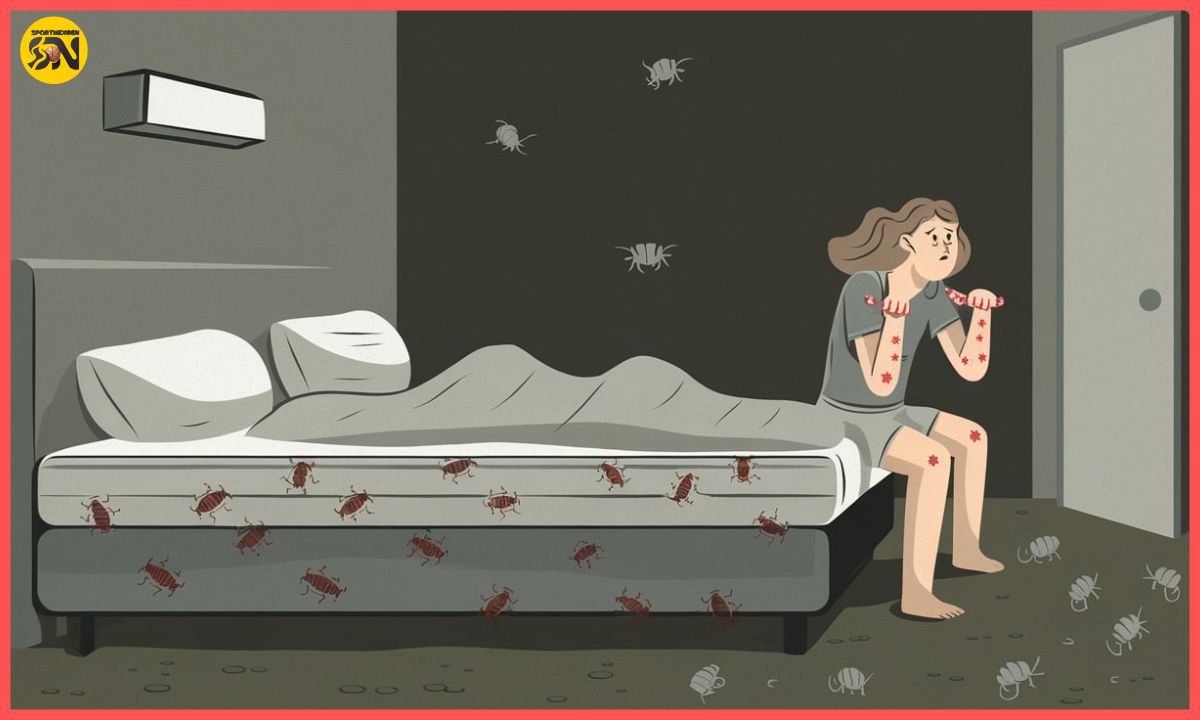Parasited Motel Malaise has become a growing crisis in the travel industry, affecting thousands of guests annually. The condition, characterized by parasitic infestations in lodging facilities, poses significant health risks to travelers who encounter contaminated rooms. These unwelcome encounters not only ruin vacations and business trips but also lead to lasting physical and psychological effects on affected guests.
The hospitality industry faces severe consequences from this problem, with infested properties suffering massive financial losses and damaged reputations. Social media and review websites rapidly spread the news of parasitic incidents, causing potential guests to avoid not just affected properties but entire hotel chains. The economic impact extends beyond individual hotels, affecting local tourism, nearby businesses, and property values in areas known for parasite problems.
What is Parasited Motel Malaise?
Parasited Motel Malaise describes a condition where guests suffer from health issues due to parasitic infestations in their accommodations. The term combines the physical presence of parasites with the general feeling of discomfort they cause. Many travelers experience this problem in budget motels and sometimes even in higher-end hotels.
These infestations can turn a pleasant stay into a nightmare. The condition often goes unnoticed until guests experience symptoms. Hotels struggling with this issue often face severe reputation damage. The problem affects thousands of travelers each year.
Key characteristics include:
- Physical symptoms from parasite exposure
- Psychological distress during and after stays
- Long-term anxiety about future travel
- Potential for spreading infestations to homes
- The financial burden of treatment and replacement of belongings
Common Parasites Found in Motels
Bedbugs are the most frequent parasited found in Parasited Motel Malaise. These small, brown insects hide in mattress seams and headboards. They emerge at night to feed on sleeping guests. Their bites leave itchy, red welts on the skin. Fleas represent another common parasited in motel environments. These jumping insects often enter rooms through carpets and upholstery.
They multiply quickly in warm environments. Pet-friendly motels face a higher risk of flea infestations. Dust mites thrive in bedding and carpets. Though invisible to the naked eye, they cause allergic reactions. Many guests experience respiratory problems due to dust mite exposure. Regular deep cleaning helps control their population.
Symptoms of Parasited Motel Malaise
Physical symptoms often appear within hours of exposure. Red, itchy bites typically appear in clusters or lines. Some guests develop allergic reactions to parasited bites. Skin rashes and hives are common responses to parasited exposure. Sleep disturbance affects many victims of motel parasited. The constant itching makes rest impossible.
Anxiety about parasited keeps guests awake at night. Poor sleep quality impacts the entire travel experience. Respiratory problems often develop in parasite-infested rooms. Dust mites trigger asthma attacks in sensitive individuals. Some guests experience persistent coughing and wheezing. These symptoms can last long after checking out.
Causes and Contributing Factors

Poor maintenance practices enable parasite infestations. Many motels cut corners on cleaning procedures. Inadequate staff training leads to missed warning signs. Budget constraints often limit proper pest control measures. High guest turnover creates perfect conditions for parasited. Rooms receive rushed cleaning between stays.
Parasited spread easily between connecting rooms. International travelers unknowingly transport parasited between locations. Climate change affects parasite populations in motels. Warmer temperatures speed up reproduction cycles. Humid conditions help parasited thrive year-round. Traditional pest control methods become less effective.
Impact on Guests and the Hospitality Industry
Financial losses affect both guests and businesses. Infected guests often require medical treatment. Many need to replace contaminated luggage and clothing. Hotels face expensive pest control costs. Legal consequences threaten affected properties. Guests file lawsuits over health impacts.
Insurance costs increase for properties with infestations. Some motels face closure due to severe problems. Industry reputation suffers from parasitic incidents. Negative reviews spread quickly online. Chain hotels lose business across multiple locations. Travel websites highlight properties with reported problems.
Read This Blog:https://sportnexgen.info/karlotta-dies-in-car-crash/
Industry Best Practices
Leading hotels implement Parasited Motel Malaise comprehensive protection programs. These strategies demonstrate commitment to guest safety. Success requires consistent application of proven methods.
Standard protocols include:
- Daily room inspections
- Weekly deep cleaning
- Monthly pest control visits
- Quarterly staff training
- Annual facility updates
Legal Considerations
Hotels face significant legal obligations regarding Parasited Motel Malaise parasitic infestations. Guests have specific rights under hospitality laws. Understanding legal frameworks helps all parties.
Guest rights include:
- Safe accommodations
- Immediate problem response
- Appropriate compensation
- Medical expense coverage
- Alternative arrangements
Prevention and Management Strategies In Parasited Motel Malaise

Staff training plays a crucial role in prevention. Employees learn to identify early warning signs. Regular room inspections become standard practice. Quick response protocols protect guests and properties. Modern technology helps combat parasited infestations. UV light detectors reveal hidden parasited. Heat treatment systems eliminate infestations naturally.
Electronic monitoring tracks pest activity patterns. Guest education improves prevention efforts. Hotels provide information about checking rooms. Travelers learn to protect their belongings. Early reporting helps contain potential problems.
Read This Blog:https://sportnexgen.info/vanna-bardeau/
Industry Future Trends
The hospitality industry continues developing new solutions. Technology offers improved detection and treatment options. Prevention remains the primary focus.
Emerging technologies:
- AI detection systems
- Smart monitoring devices
- Automated treatment systems
- Digital tracking platforms
- Prevention automation
Frequently Asked Questions
How quickly do parasite symptoms appear?
Symptoms typically develop within 24-48 hours of exposure, though some reactions may appear sooner.
Can parasites travel home with guests?
Yes, parasites often hide in luggage, clothing, and personal items, potentially infesting homes.
Are luxury hotels immune to parasites?
No, parasites can infest any accommodation regardless of price or rating.
How long do parasite treatments take?
Professional treatments usually require 24-72 hours for complete effectiveness.
Should guests request compensation for parasite exposure?
Yes, affected guests should document their experience and request refunds or compensation for damages.
Conclusion
Parasited Motel Malaise represents a serious challenge for the hospitality industry. Properties must prioritize prevention and quick response protocols. Guest awareness helps reduce infection risks. Industry cooperation remains essential for controlling this growing problem.
Regular maintenance and proper training provide the best defense. Hotels implementing comprehensive prevention programs see fewer incidents. Guest satisfaction improves with transparent safety measures. The future of hospitality depends on effectively managing this challenge.
The hospitality industry must continue adapting to this threat. New technologies offer improved detection and treatment options. Staff education programs require regular updates. Guest safety must remain the top priority for all properties.

Hayyat is a talented content writer and digital marketer with expertise in SEO, social media management, and online marketing. She excels at creating impactful, data-driven content to help businesses connect with their target audience and achieve measurable outcomes.





